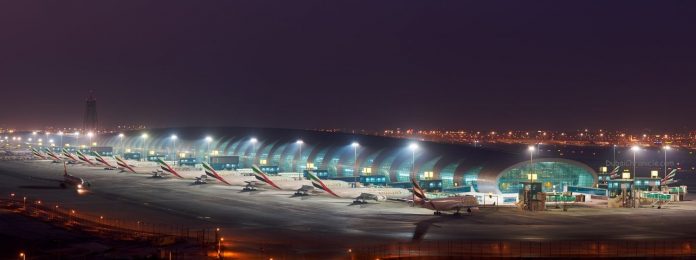
It is official – Dubai International is the world’s busiest airport for international passengers for 2014. The airport recorded 70.47 million passengers last year and it is expected to handle another 79 million in 2015.
London’s Heathrow, which used to hold the titled busiest airport until recently, welcomed 68.1 million passengers. That is about 2 million passengers less compared to the Middle Eastern aviation hub.
That, however, is not the first time in which Dubai International surpasses Heathrow. During Q1 2014, the emirate’s airport recorded more international passengers compared to the airport in London. Thus, it won the title busiest airport in the world.
Nevertheless, this success was short-lived, since Dubai International had to reduce traffic in mid-2014. That was due to the major runway upgrades that had to be performed. As a result, Dubai International served a limited traffic in the summer of last year.
Despite all that, Dubai’s main airport managed to catch up once the upgrades were done and to blow away the competition. The number of international passengers that were handled by Dubai International in 2014 was 6.1% higher compared to that for the entire 2013.
The prognosis for 2015 are also looking up. Later this year, Dubai’s airport will open a new concourse. That will boost its capacity to around 90 million passengers a year. Nevertheless, Dubai International is not expected to stretch to its full capacity this year. Forecasts for 2015 are more modest, predicting that 2014’s busiest airport will welcome 79 million passengers over the next twelve months.
Although Dubai International is a relatively new airport, it has been growing with rapid rates over the past decades. It first started to operate back in 1960 and since then its average annual growth is around 15.5%.
This new milestone further establishes Dubai’s reputation as a regional aviation hub. Very soon, however, the emirate will turn into an international aviation center. The emirate is planning to construct one of the world’s largest airports by 2020. The massive facility is projected to cost $32 billion and to have a capacity of up to 240 million passengers. Let’s not also forget that Dubai is home of the world’s largest airline by traffic flown, Emirates. In addition, its low-cost carrier FlyDubai is also gaining popularity.























![The Square at Nad Al Sheba Gardens Now Open hope tax season treated you well! Just checking in—ready to refocus on growing your business? I remember how we discussed scaling your [specific aspect of their business, e.g., online presence] but paused due to time constraints. We now offer a streamlined 6-month plan that delivers real results without adding to your workload. Let me know if you'd like to chat—I’d love to help you pick up where we left off!](https://www.dubaichronicle.com/wp-content/uploads/2024/11/The-Square-5-218x150.jpg)









